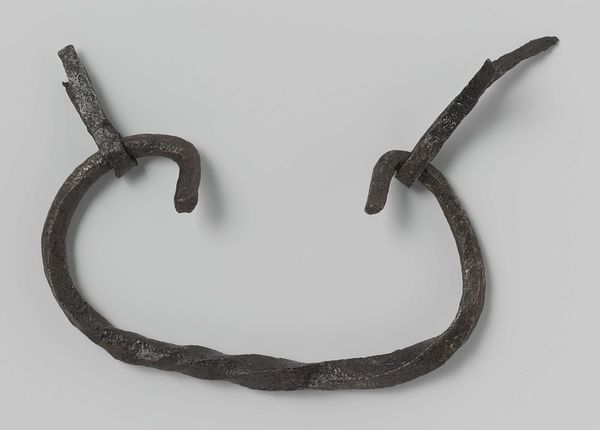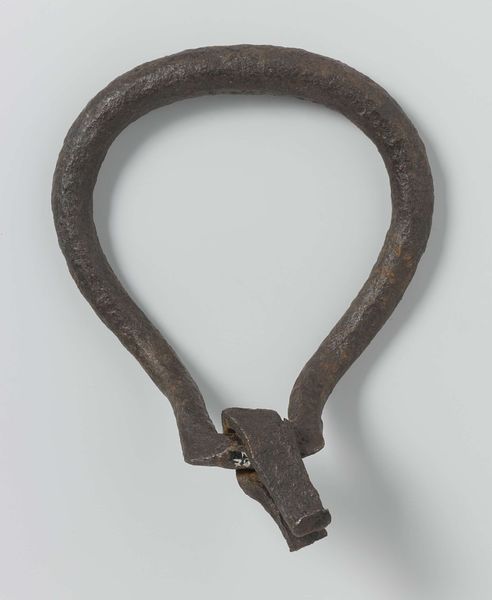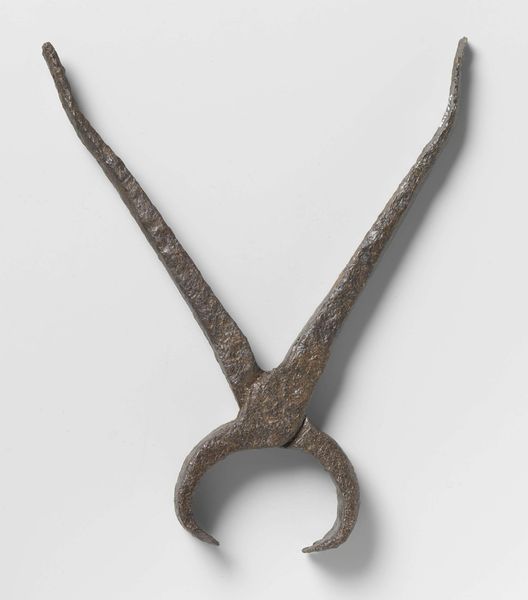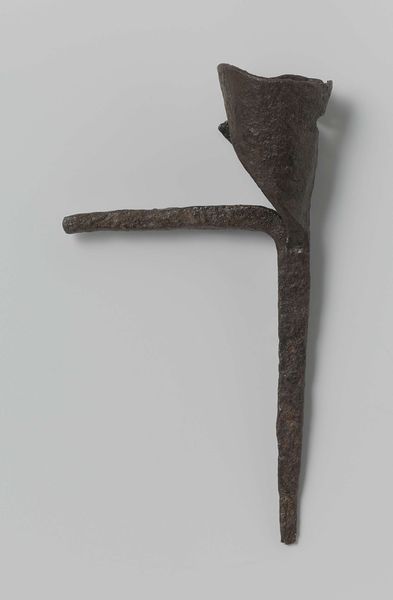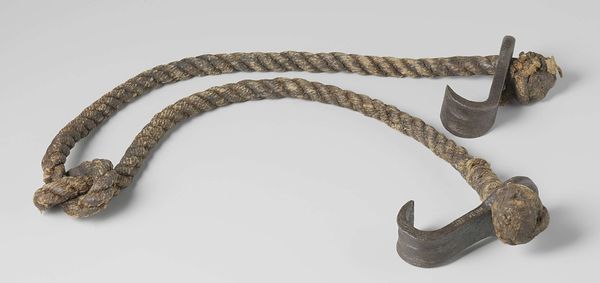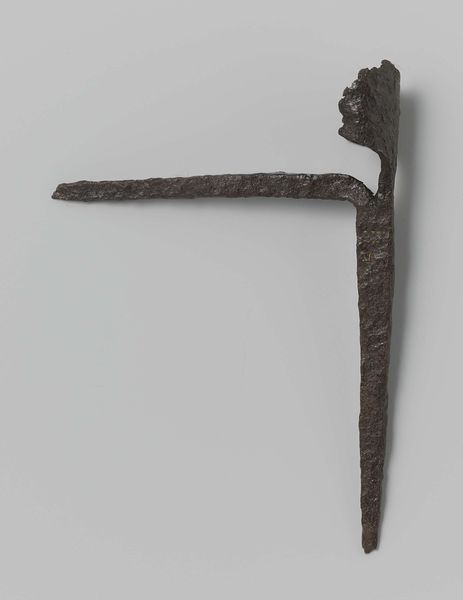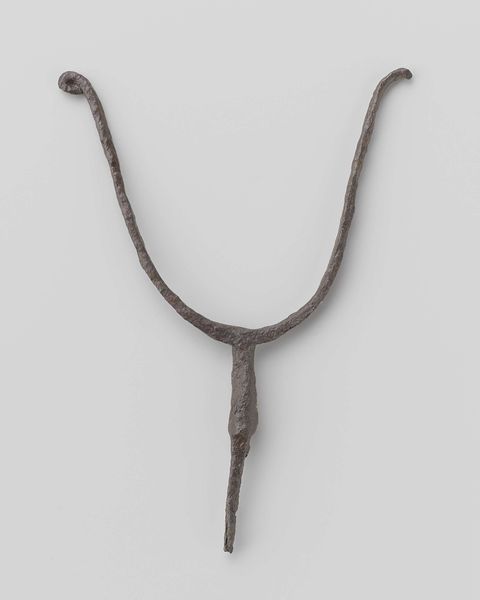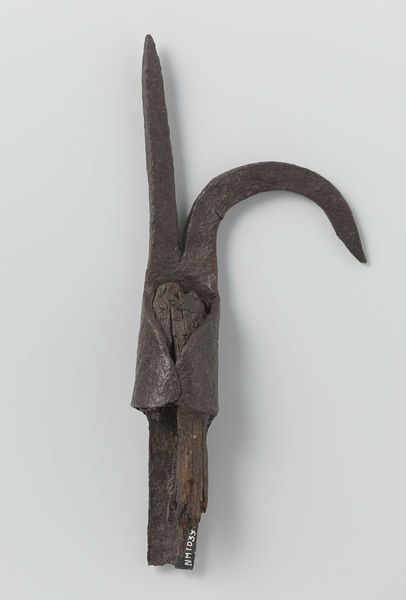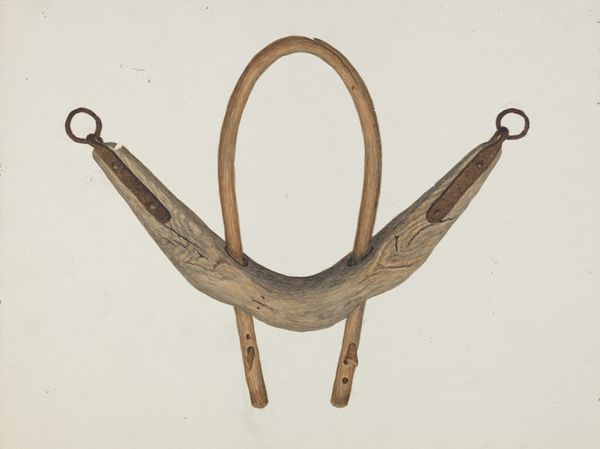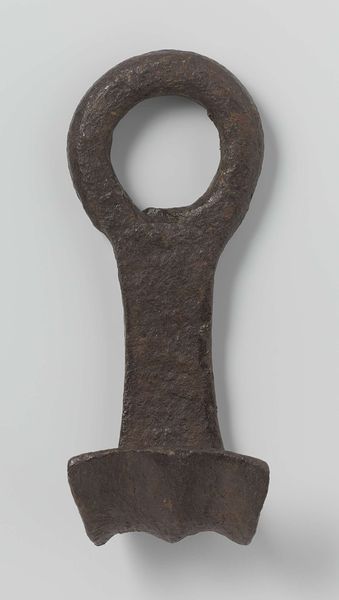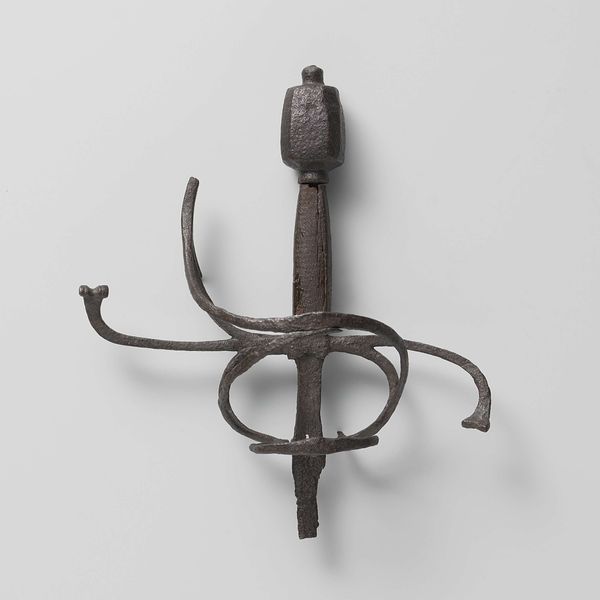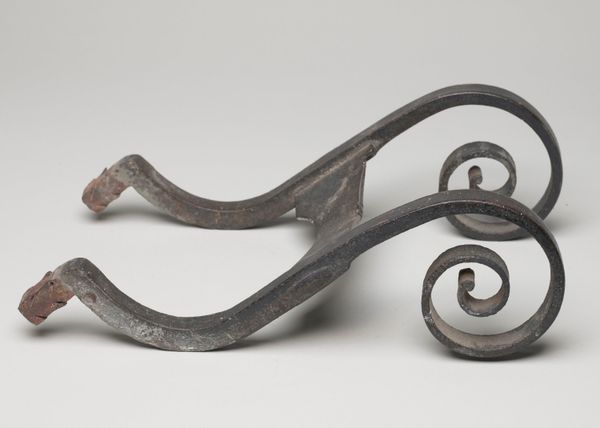
Handgreep, ovaal en getordeerd met twee lissen van een kist c. 1590 - 1596
0:00
0:00
anonymous
Rijksmuseum
metal, sculpture
#
metal
#
11_renaissance
#
sculpture
Dimensions: length 15 cm, width 8 cm, diameter 1.2 cm
Copyright: Rijks Museum: Open Domain
Curator: Here we have an intriguing, somewhat austere object. It's called "Handgreep, ovaal en getordeerd met twee lissen van een kist," or "Handle, oval and twisted with two loops from a chest," created by an anonymous artist around 1590 to 1596. It’s currently held in the collection of the Rijksmuseum. Editor: The immediate impression is one of functional solemnity. The dark metal and simple, looping form are striking in their austere quality. It feels almost… weighty. Curator: Indeed. It’s wrought from metal, and if you look closely at the curve of the handle, you’ll notice that its texture has been elegantly twisted. Note also the two loops which, strictly speaking, attach it to its host object. How would you parse that visual form? Editor: Well, that’s interesting. This was part of a chest, and these chests weren’t mere storage. These objects played a significant role in the socio-economic landscape of the time, representing not only a means to secure possessions, but also playing an integral role in the construction of domestic space and familial power dynamics. Consider the kinds of items being secured – the tools of the trade. How does that inform what we think about how knowledge gets transferred or skills get transmitted to other workers within certain Renaissance settings? Curator: Precisely. And aesthetically, I find the juxtaposition of the smooth curves and sharp, angular loops visually arresting. There’s a clear tension there, and a deliberate emphasis on geometry, line, and volume—aspects that speak to both its functionality and its inherent design quality. Semiotically, one could see it as a literal gateway. Editor: While appreciating the interplay between shape and negative space here, I wonder about its historical implications, which seem far from neutral. Securing some resources implies that others can be, by extension, restricted, thus informing the means of production or who has or does not have access to things. If such simple utilitarian forms dictate people’s relation to resource and wealth, we might as well see it also as one node in larger structures of ownership, access, and control during the late 16th century. Curator: An astute interpretation. For me, examining the visual form and materiality offers access to considering what abstract forces helped inform it. Its metallic sheen suggests permanence and durability, reflecting, perhaps, aspirations towards longevity. The interplay between its visual and historical features, from all approaches, truly brings the object to life. Editor: I couldn't agree more. Viewing such an elemental object offers such a rich dialogue on our place within social processes—to its credit as art.
Comments
No comments
Be the first to comment and join the conversation on the ultimate creative platform.
